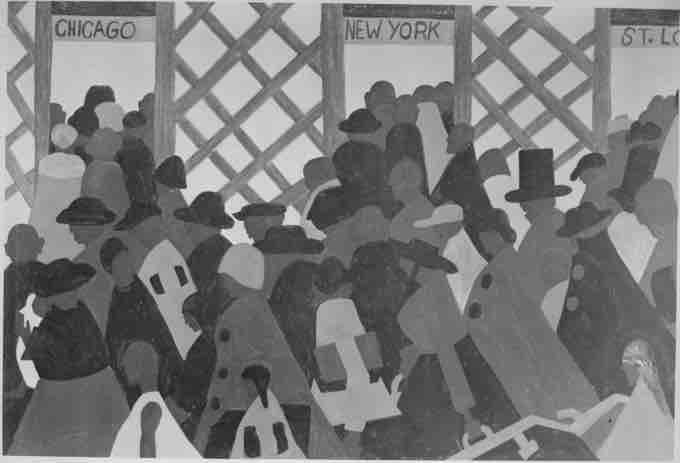Throughout the latter half of the 19th century and during the early years of the 20th century, America underwent a change in national demographics that included large amounts of immigration by Mexicans into the United States and a Great Migration from the South to the northern part of the country by African-Americans.
Mexican Immigration
Following the end of the Mexican-American War from 1846 to 1848, migration from Mexico was not subject to restrictions and Mexicans moved freely and frequently across the border into the United States. Typically, Mexicans moved in order to work as construction, railway, or seasonal agricultural laborers. The immigration laws of the United States during this time, such as the Emergency Quota Act, generally allowed exemptions for Mexico, while being more restrictive to citizens of the Eastern Hemisphere.
Mexicans received special allowances due to the importance of Mexican labor to the United States economy. One example of these allowances was the Immigration Act of 1917, under which all potential immigrants had to pass a literacy test and pay a head tax. At the request of growers in the southwest who depended on farm labor from Mexico, however, the Secretary of Labor waived these requirements for Mexican immigrants. The abundance of individuals, companies, and groups interested in the availability of inexpensive labor ensured that the immigration laws in place throughout the early 2oth century did not adversely affect the movement of Mexican migrants, in spite of calls on the part of some of southern congressmen to put an end to the open border policies.
African-American Migration
From 1910 to 1970, approximately 6 million African-Americans moved out of the rural Southern U.S. into the Northeast, Midwest, and West in what historians have called the African-American Great Migration. Some historians differentiate between the first Great Migration (1910–1930), numbering about 1.6 million migrants who left mostly rural areas to migrate to northern and midwestern industrial cities, and a Second Great Migration (1940 to 1970), in which 5 million or more people moved, including many to California and various western cities. The Great Migration created the first large urban black communities in the North. Conservative estimates put at 400,000 the number of African-Americans who left the South from 1916 through 1918 to take advantage of a labor shortage following the First World War.
Causes and Challenges
When the Emancipation Proclamation was signed in 1863, less than eight percent of the African-American population lived in the northeastern or midwestern United States. In 1900, about 90 percent of blacks still lived in southern states. Between 1910 and 1930, the African-American population increased by about 40% in northern states as a result of the migration, mostly in the major cities. Cities including Detroit, Chicago, Cleveland, and New York City had some of the biggest increases in the early part of the 20th century. Blacks were also recruited for industrial jobs, such as positions with the expansion of the Pennsylvania Railroad.
Because changes were concentrated in cities, which had also attracted millions of new or recent European immigrants, tensions rose directly with competition for jobs and housing. There was no government assistance, but often northern industries such as the railroads, meatpacking, and stockyards took it upon themselves to recruit workers.

The Great Migration
This later painting, titled "During World War I there was a great migration north by southern Negroes" by the artist Jacob Lawrence, depicts African-American migration north via abstract images.
The primary factors for migration from the South were segregation, the widespread violence of lynching, and a lack of opportunities. In the North, African-Americans could find better schools and adult men could vote (joined by women after 1920). Cities that had been virtually all-white at the start of the century became centers of black culture and politics by the middle of the century. Segregation still imposed severe economic and social costs, but allowed northern "Black metropolises" to develop an important infrastructure of newspapers, businesses, jazz clubs, churches, and political organizations that provided the staging ground for new forms of racial politics and black culture.